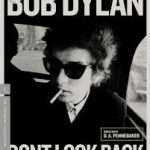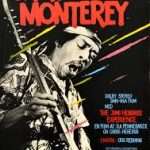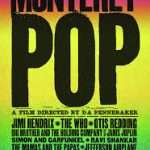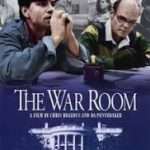 Immortalizing Truth: Visionary Cinema Verite Filmmakers D.A. Pennebaker and Chris Hegedus
Immortalizing Truth: Visionary Cinema Verite Filmmakers D.A. Pennebaker and Chris Hegedus
Interview and story by Steven Jay
Dylan. Bowie. Hendrix. Monterey Pop. Carville. Carol Burnett. George Stephanopolous and many others.
They’ve trusted him with capturing raw footage of their private lives, behind-the-scenes way before there was something called “Reality TV.” This is the real reality. The raw truth. Capturing life as it happens and creating an important story by fusing pieces together through the wonder of imagination. A personal power we can all tap into–if we really wanted to.
It’s a few years become the name, and music of Bob Dylan became a household name. As he walks through the turnstiles and runways of life, Pennebaker captures life as it happens.
In a few hours, Dylan will walk from the dressing room to the stage, performing to crowds of enthusiastic fans who know every word of his prose and poetry.
He senses that something extraordinary is happening. Unsure of what the final cut will look like, he’s capturing life at the moment as it’s really happening. No scripts. No staging. Life, Raw.
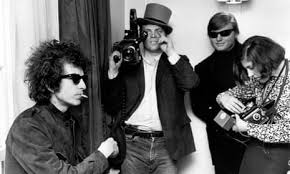 Like many documentaries, “Don’t Look Back” takes shape after all the film is recorded. Once viewed, no one knows how the story will be revealed until the mosaic of celluloid is stitched together in what was once a long and sometimes painful process.
Like many documentaries, “Don’t Look Back” takes shape after all the film is recorded. Once viewed, no one knows how the story will be revealed until the mosaic of celluloid is stitched together in what was once a long and sometimes painful process.
What can we learn from this process? This is the actual reality show, not some staged wanna-be fame whore seeking the spotlight to show off her faulty ego. This is reality. And just like the title of his infinite collaboration with Bob Dylan, “Don’t Look Back,” there is no turning back.
This is the art of storytelling realized spectacularly. And he’s done it again and again and again. He was telling the story without knowing the outcome. How brave!
The lens of life. A new perspective changes everything…
Now we turn to you. Instead of looking through the lens and into the private life of a performing artist, while you have no idea where the day will lead, you transport your day into magnificent moments of a life you are creating. It’s a commitment to acceptance and passion and a vision of something beautiful that calls to you to take a step, to take more steps, and see the life that you wish to live—not for others, but for yourself, knowing that every step is one step closer to the reality you have dreamed of.
Enter the world of cinema verite.
“It’s this fascinating style that always felt like the right way of making films: getting dropped into people’s lives and getting into this innate voyeuristic scenario watching this entire drama unfold in front of you,” states Pennebaker’s partner, Chris Hegedus.
“In this case, it was the drama of what went on in the operating room of life. I used to make the analogy of this was like Doctor Marcus Welby or Mash—but much more like MASH. That really turned me around. That there was a job I could do in filmmaking, and that I could do films about the real world.”
“When I graduated from film school, I knew I didn’t know how to be a Hollywood director, but I saw how to make these stories happen in real life. However, the equipment was developed to rent a big rig in the late 1960s or early 1970s and get our hands on great equipment. My interest escalated with the advent of technology, which became easily available.”
“It’s like you’re writing a play based on characters that you know, but in this case, the characters are right in front of you,” Pennebaker says with a smile. “And the instant is right now. And if they are going on a plane going somewhere, you make a judgment call to see if you want to film that.
And why do you want to film it? Well, it’s a connective to where we are going.
And where we are going is really what it’s all about. We’re not interested in conceptual filmmaking at the airport. Still, at the airport, they might make a phone call, they might look out of the window, they might say something, and those are the long shots—you say that you want to get someplace with them, so when you get to the place where you do want to film what we want to film— we’re part of that entourage.
And that, in a sense, guarantees you the continuous entrée!
And maintains that entrée as continuously as possible during the filming. Still, you are writing a play, but the pencil is uncertain and undetermined. You can’t be sure if this line is what you want until you edit it, but you know you have to have something up on the screen to look at.”
“It’s not a problem if the characters are going to act for you. If that were the problem, you wouldn’t even start it! Because if you thought that there was a chance that they would be acting, you would say, I can’t do it; it’s too hard!”
It is difficult to get invited into the private, personal, behind-the-scenes, and unscripted life of an icon in the making—or an established one. So, how does one secure that special ‘privilege’ of getting the access needed to make the film?
It is only reserved for those who have earned the most trust.
“Maybe it’s not even trust,” Pennebaker says from his apartment in New York City’s Upper West Side. “In a way, it is trust, like if you go out with some friends and you don’t want them to pull at you in some way, to get the fifty bucks you have in your pocket. But it happens because they want to do it. Now, why they want to do it is not our problem.”
“When James Carville says, ‘Why should I let you into my secret chamber?’ which is the size of a basketball court, the only thing you can tell him is ‘Because you want to.’
“Now he has to figure out what that means. And when he does, you do it, not promising him any spiritual solution. Still, he has figured out what you are doing. He figures out that based on what I’ve done in the past, and he knew I filmed Kennedy, and it was political, and he felt that the two of us didn’t have any other agenda.”
“We weren’t going back on the air that night and put any footage on television and make him look inappropriate. That is something he figures out, and when you come to a hard place, you never get to a place where you push a piece of paper in front of his face and say, ‘James, you signed a contract; we have to do this'”.
They decided to initiate in a way, and the way you do it gives them the sense that it’s their film! Whether or not they act is not the issue or essential.
Our conversation turns to figuring out what art is and what makes art right for the artist?
“When I grew up,” Hegedus says, “An artist was a person who painted a picture. Never in my life did I see myself as an artist. And my entire life, I was figuring out what was driving me. Because I thought of myself as unemployable, I didn’t want to do what others were doing. I was trained as an electronics engineer. I was hired by a big company to build big projects. I was projected on a road, but I never saw myself wanting to be an artist. I didn’t know what an artist really was. It took me years to figure out what the problem was.”
Now that one has determined what the problem was—or is—one needs to ask a lot of very specific questions to proceed to the next stages….
“In our world, “Pennebaker says, “Once you’ve shot the entire footage and you’re about ready to edit the footage you’ve shot, it feels almost like you are shooting again. And the difference in the process, I believe, is in a movie, the camera is part of the set, it is part of the actors, it moves like the actors, it is behind the glass. It doesn’t look around.”
“For us, the way I see the camera is the audience in the theater, and everything that happens on the stage is organized by someone else; someone is planning their life daily, moment by moment, and we’re not part of it. We have to decide what to shoot and when not, and we’re like the audience that is surprised because the camera is surprised theatrically. The editing takes that position and puts it more theatrically. There is no sure way we always do it, but in the end, we agree about how we want to be a pair of eyes, a pair of heads watching it.
“There are two parts of our filmmaking. The first part is our detective work; it’s shooting the film and anticipating what we want to do, like in “The War Room.” before we shot the film, we visualized the film as about a man becoming President. But when we got in there, we made decisions like
“What is the story we are going to find here? Who are passionate about what they are doing, and the stakes are high. We were lucky to follow James Carville and George Stephanopolous.
“The second part, when you get the film back, is trying to make the story with the material you’ve received, and that is an entirely different kind of detective work. When you are making the film, the characters create drama. So before you are editing, you realize that the storyline needs to create drama, so it’s all created in the editing room. The structure and the style, and how it evolves. And that is something you really think about when you are shooting because when making the film, you are obsessed with capturing the moment and trying to figure out what the story is and how to get access to the people and get what is there.”
What keeps the artist going forward despite their financial hurdles and roadblocks?
“You have to be incredibly passionate and have firm convictions about what you want to do,”-Chris Hegedus.
Pennebaker smiles and looks me right in the eye. “You also have to be brave. Because with every change, there is a chance of total disaster. And you have to be able to deal with that. However, dealing with the idea that it might be a disaster isn’t easy for most people. Therefore, one must be incredibly confident and have a mighty open mind to new ways and possibilities. That is an aspect of the independents that people don’t generally think about- that they are courageous. Bands such as Depeche Mode-–are very, very brave.”
–Steven Jay for Mobilized

